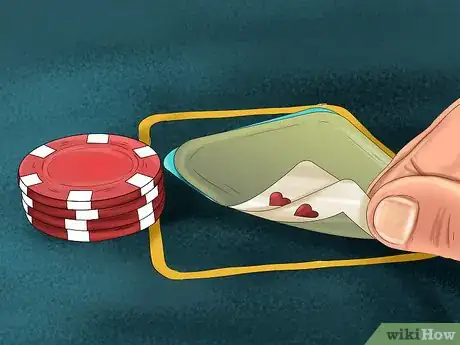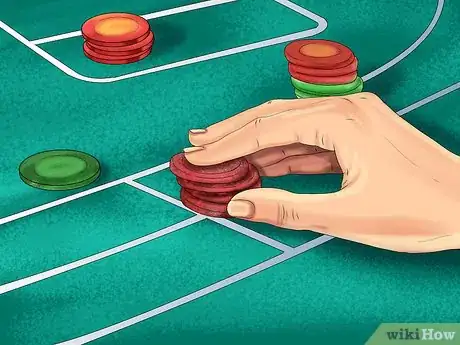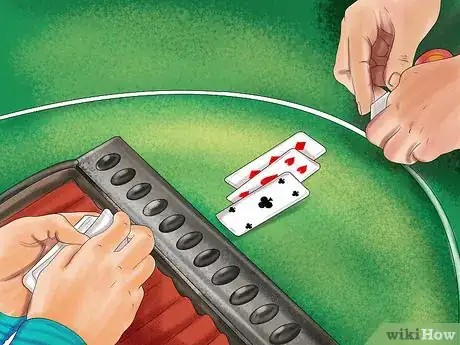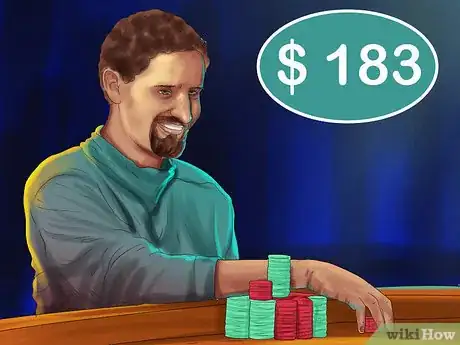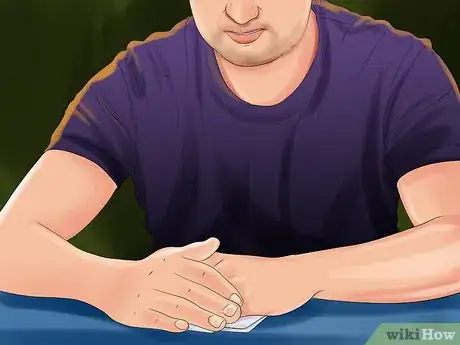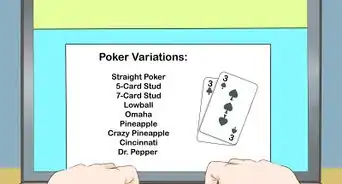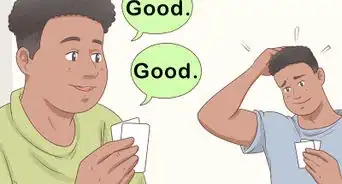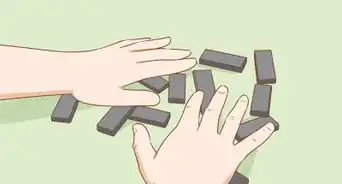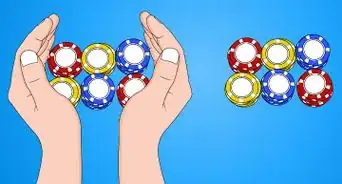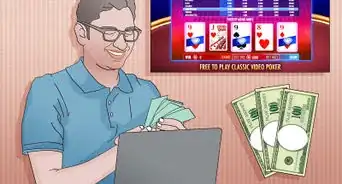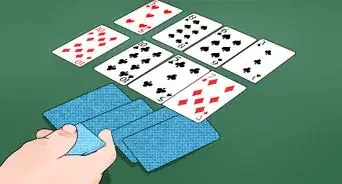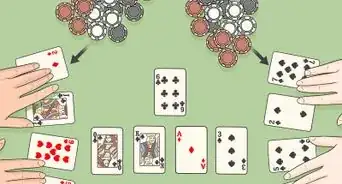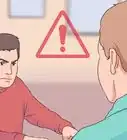X
wikiHow is a “wiki,” similar to Wikipedia, which means that many of our articles are co-written by multiple authors. To create this article, volunteer authors worked to edit and improve it over time.
This article has been viewed 59,093 times.
Learn more...
Unlike the movies, poker players cannot buy more chips while a hand is in progress. Virtually all poker games are played 'Table Stakes'. Only what is on the table plays for the current hand. When dealing any poker game the 'dealer's nightmare' is what to do when a player doesn't have enough chips to cover the other bets.
Steps
-
1Table Stakes means that chips can only be bought between hands. It also means that all chips must stay on the table until a player leaves. Chips cannot be removed (or rat-holed) to be brought out later.
-
2First player bets $100. The next player only has $20 to call. Two more players call the $100 bet. The easiest way to figure out how much the Short player can win is to say they can win $20 times 4 players. So, $80 goes into the main pot. That means that $240 ($80 X 3 players, what they are short)will go into the Side Pot. At this time the dealer should announce "John is all-in for $20. He can win the Main Pot." The dealer is telling John, himself, and everyone at the table what John can win. **Be sure to add in any blinds that are $20 or less into the Main Pot. The 'Main Pot' is not necessarily the largest pot. It is just the first pot. It is also the pot under which the burn cards will be.Advertisement
-
3First player bets $100. John, the next player, goes all-in for $98. Two more players call the $100 bet. John is $2 short of the bet, X 3 players. There is $6 in the side pot. The dealer will announce "John is $2 short. Six on the side"
-
4First player bets $100. The next player goes all-in with $45. A player then calls with the full $100. Another player goes all-in with $50. Always start the Main Pot first with the shortest chips. Say out loud "John has $45 four ways, plus the blinds. That will be $180 plus the $10 Blind. Mary has $5 more, 3 ways, that makes $15 in the first side pot. All the rest is in Side Pot #2." You now have 3 pots. Any more betting goes into pot #3. You must say your calculations out loud. If anyone disagrees this is their time to speak up. Take corrections graciously. Say thanks for helping.
-
5Understand that sometimes it is easiest to figure what the short player has. Other times it is easiest to calculate how much they are short. The third scenario is to just match the chips (colors) and do no math. **Whatever is easiest for you is the best way.
-
6Situation #4 First player goes all-in for $183. The next player is all-in and has $152. Third player has $400 and goes all-in. Now take $152 from each of them and put it into the Main Pot. Be sure to add in any blinds of $152 or less. Player #2 is actually $31 short of the big bet by the first player. If you can do this in your head then you know that there is $62 on the side pot. This is really about chips by the color. Often it is easiest to just make equal stacks, rather than do the math.
-
7Situation #5 Dealer's Nightmare! Three or four players go all-in for odd amounts. Just leave all their chips in front of them. Pray. Pray that the guy with the most chips wins and takes everything. When paying out the pots start with the outside (most recent pot made) pot and work your way back to the Main Pot.
Advertisement
Warnings
- Don't go too fast when doing side pots. Listen to the players when they say it is not right. Say everything out loud for your benefit and the other players.⧼thumbs_response⧽
Advertisement
About This Article
Advertisement

